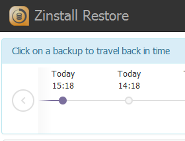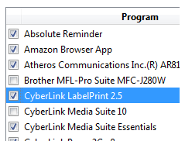Among the many different ways to backup a computer, backup to external drive remains one of the most efficient options – especially when it comes to backing up an entire computer, not just a few files.
External hard drives are relatively cheap (about $50 per 1TB, compared to about $100 annual for Cloud options), have plenty of space, and are the fastest backup option available.
In this tutorial, we’ll see:
If you are not looking for an overview, and are just looking for the instructions on how to backup to an external drive, click on How to backup your entire computer to external hard drive here:
Just want the instructions on how to backup your entire computer to an external drive? Click here to skip to that part
First, let’s define that a “full” or “entire” backup actually means. A common misconception is that if all of your documents and photos are backed up, you are all set.
A backup of all of your documents is of course much, much better than no backup. However, it is often not enough.
What about your emails? Favorites? Accounts and passwords?
What about the data from your tax software? Reports from your accounting apps?
What about the actual programs that you use?
Again, having a file backup is great, and is a giant step in the right direction. It’s just that there is much to your computer than just files, and without that – it won’t feel like “home”.
A backup of your entire computer should thus include:
The product we will be using here is Zinstall FullBack Pro. It creates a full backup of your entire computer on your external USB hard drive. That backup is then updated automatically, so you are protected at all times.
Here is how to set it up:
It really is that simple to keep your entire computer safe.
Click here to get a free trial, and make a full backup of your entire computer on a USB drive
Once FullBack starts to run, it performs a complete backup of your entire computer, including programs, settings, accounts, profiles, email, favorites, documents, photos, and all files.
Once that backup is complete, FullBack keeps it up to date, by backing up any changes made to your computer. To save storage space, those backups are incremental, i.e. only the actual changes are stored in your backup – without unnecessary data.
You do not need to manage backup schedules and do not need to remember to make a backup (who can remember this stuff?). It’s all automatic, and always up to date.
Of course, the real reason you have a backup is the restore part. How do you restore a single file that you’ve misplaced? And how do you restore everything, including program files, if your computer crashes? Read on to find out.
So you were working on an important document, and now it’s gone. Fear not – that’s exactly why you have set up an automatic backup of your entire Windows 11 or Windows 10! Here is what you do:

That’s it – your file is back, safe and sound.
This is something you can only do if you have used Zinstall FullBack. It can actually restore all the stuff from your backed up computer (programs, settings, files, emails, accounts, password, favorites, documents, pictures, music, etc.) onto a completely different computer and completely different Windows. Even if you’ve backed up a Windows 10 32bit Dell, and your replacement PC is a Windows 11 64bit HP, Zinstall will still restore everything you’ve got.

To do that, install Zinstall FullBack on the replacement computer. Open your original backup, and follow the prompts for complete restore. When finished, just restart the computer, and you’ll see all the programs, settings and files from your crashed computer.
Using an external hard drive is cheaper, faster than any Cloud solution. There is one downside, however – in the unlikely event that both your computer and your hard drive are destroyed, you would have no backup. This kind of “survivability” the the main advantage of using Cloud backups.
A good rule to follow is the 3-2-1 rule of backups: 3 copies of your data, stored in 2 locations, 1 of them off-site.
FullBack Pro allows you to comply with the 3-2-1 rule by storing your backups both on your local drive, and on a Cloud storage of your choice.
This way, you can keep two separate backups of your computer – one local, and one on the Cloud. In total, you have 3 copies of your data (computer itself, local drive, Cloud), in 2 locations (your home / office and the Cloud), 1 of them off-site (in your Cloud storage).
This is of course entirely optional. You don’t have to use Cloud, and many people indeed prefer to keep their backups local due to cost and privacy concerns. But if you do, FullBack has got you covered.
Backup to an external hard drive is one of the most common and efficient ways to keep your stuff safe.
It is very important to keep that backup up to date, automatically – so that it is all there when you suddenly need it. It is also important to backup everything, not just parts of your stuff.
We believe that the approach outlined in this guide provides the optimal combination of a easy setup (no technical skills required), and an exceptional backup performance and reliability.
You can literally set up a full backup of your entire computer in 5 minutes, and basically forget about it after that.
The next time you’ll have to think about your backup is when you lose a file, or when your computer crashes. When that happens, you’ll thank yourself for spending those 5 minutes on getting a great backup for your computer.